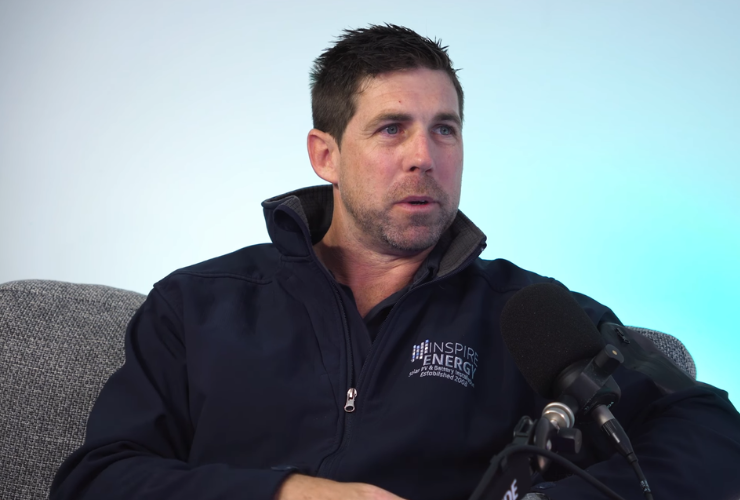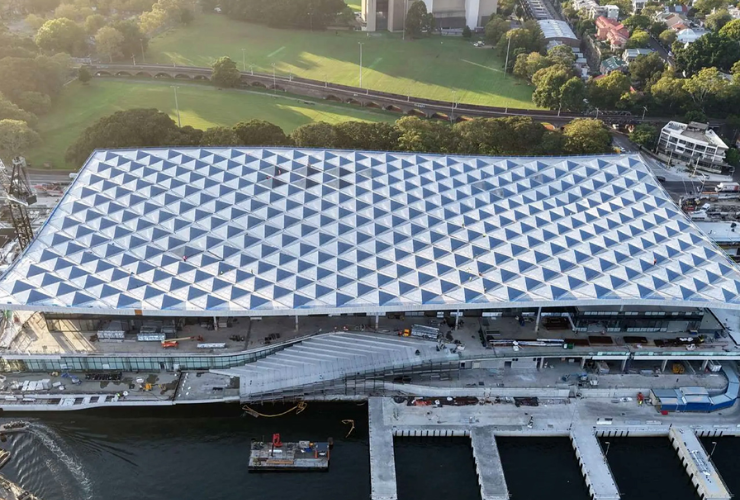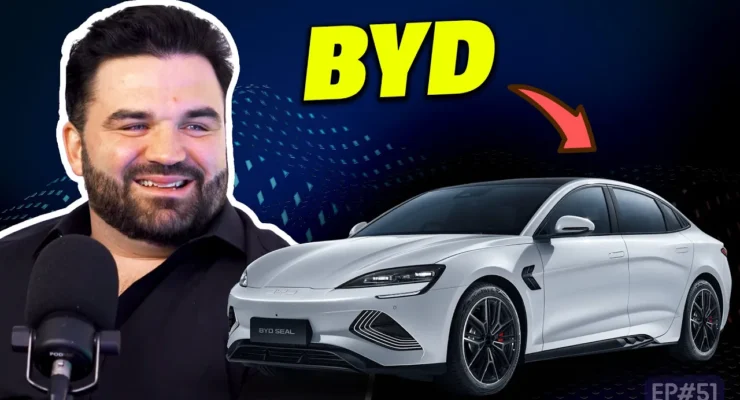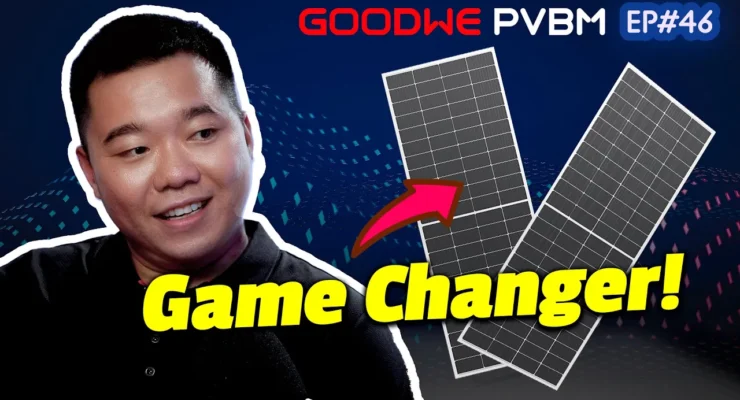
Sydney Fish Market’s Secret Solar System: Inside a 265 kW Building-Integrated Design
When you stand on the foreshore and look at the new Sydney Fish Market, you don’t see rows of obvious solar panels.
You see a striking, wave-like roof covered in shimmering triangular “pods” that look more like sculpture than energy hardware. But hidden in that design is a serious solar power system – 265 kW of generation spread over 263 custom pods, designed and delivered by Sydney-based installer Inspire Energy.
The brief sounded almost impossible:
At least 5% of the building’s huge energy demand had to come from renewables
The roof had to look like a wave, covered in thousands of triangular elements
The building had already won design awards – conventional black panels slapped on top were not acceptable
This is the story of how Inspire Energy’s Managing Director Matt Hartney and his team solved that problem – and how the same technology they developed for Sydney Fish Market is now opening up new possibilities for coloured solar panels, solar carports and solar facades across Australia.
A Wave-Shaped Roof, 263 Pods and a 5% Renewable Energy Mandate
The roof of the new Sydney Fish Market was never designed with “easy solar” in mind.
Instead of a flat expanse, it’s made up of hundreds of triangular pods, set out to mimic the pattern of a wave and the textures of fish scales. Visually stunning. Electrically… difficult.
Yet the project came with a clear mandate:
5% of the building’s total energy must come from renewable sources
That meant a substantial solar system, on a building with huge energy use – think industrial freezers, refrigeration, lighting and HVAC running almost constantly
Inspire Energy ultimately delivered a 265 kW solar system by installing PV on 263 individual pods, with three panels on each pod facing the optimal direction. The challenge wasn’t just to fit enough solar on the roof – it was to make it effectively disappear into the architecture.

“We basically tried to make solar panels not look like solar panels.” – Matt Hartney
Why Normal Solar Panels Weren’t Good Enough
On a typical commercial building, the solution would be simple:
Large, flat roof
Standard modules
Standard mounting
Maximise output per square metre
Sydney Fish Market is the exact opposite of that.
The architects and Infrastructure NSW wanted:
The wave form to dominate the visual experience
A roof where solar blended in, not stood out
A solution that would satisfy design awards, planners and engineers – all at once
Initially, Inspire Energy explored double-glazed glass solar PV that could cover entire triangular surfaces. It looked promising, but there were two big problems:
Cost – building-integrated glass PV is still significantly more expensive than conventional modules
Budget constraints – even on a major public project, there’s a limit to how far you can push the envelope
So the team went back to the drawing board and came up with a hybrid approach.
The Breakthrough: Coloured PV, Custom Frames and Aluminium Cladding
The final design balances aesthetics, efficiency and cost:
Use conventional-size PV modules
Add a coloured film and a matching frame so the panels blend into the pods
Fill the remaining triangular areas with colour-matched aluminium cladding
Powder-coat the mounting hardware in the same colour so it all disappears at a distance
From a few metres away, you can’t easily tell where the solar ends and the cladding begins. From the ground, the pods read as part of the architectural wave – not a bolted-on solar afterthought.
Why the Colour Matters – and How It Affects Performance
Coloured PV sounds simple, but it’s technically tricky.
Lighter colours (like white) tend to reduce panel efficiency because the colour layer blocks more light
Darker colours (like grey) allow more light through to the cells, improving output
Inspire Energy spent almost 12 months testing different shades and finishes:
Around 12 different colour samples were imported
Each batch was installed on a mock-up roof in Botany
Architects, builders and Infrastructure NSW representatives inspected the options at different times of day and from different angles
In the end, a slightly darker grey was chosen as the best balance between aesthetics and performance.
Finding the Right Manufacturer: From Europe to China
Once the colour was settled, another challenge emerged: finding a manufacturer that could actually deliver:
High-quality coloured PV modules
Consistent surface finish without ripples or creases
Full IEC certification and CEC listing for the Australian market
The ability to scale for future commercial projects
The First Attempt: Europe
Inspire Energy’s first manufacturing partner in Europe supplied sample modules using a coloured “C-axis” film placed under the glass. But when the panels arrived in Australia and went through third-party testing, problems showed up:
Visible creases and shadows in the colour film
Questions over the quality standards and certification pathway
Concerns about whether the panel would pass full IEC testing
After flying to Munich and meeting the manufacturer in person, it became clear they weren’t willing or able to adjust their processes to the level Inspire Energy required. That relationship ended.
The Pivot: A Specialist BIPV Manufacturer in China
The turning point came through a connection at the University of Sydney, who introduced Matt to a Chinese manufacturer specialising in building-integrated photovoltaics (BIPV).
This manufacturer:
Already had projects installed across Asia and Europe
Could provide the full suite of flash test data and IEC certificates
Worked with Inspire Energy on independent third-party testing
Supported the process to get the modules CEC listed in Australia
When Matt and one of the builders visited the factory in person, they saw:
A state-of-the-art, highly automated production line
Multiple lines (around 14) running from wafers all the way to finished modules
Consistent quality across sample batches
That manufacturer ultimately supplied the coloured N-type modules used at Sydney Fish Market – and now provides the product Inspire Energy is rolling out to other Australian projects.
Quality Assurance, ISO Systems and Why This Matters for Big Projects
Sydney Fish Market isn’t just a design exercise – it’s also a textbook example of how serious quality control is done on large, complex solar installations.
Inspire Energy:
Is fully ISO-accredited for environmental management, quality management, and workplace health and safety
Uses detailed Inspection Test Plans (ITPs) for every project – residential and commercial
Requires installers to submit photos and test results at every key stage
Uses digital safety systems on site, including SWMS/JSA check-ins that are geotagged and time-stamped
For Sydney Fish Market specifically:
Every pod went through its own test procedure before leaving the pre-assembly site on Glebe Island
The team conducted IR testing, insulation resistance testing and IV-curve tracing during commissioning
Structural engineers checked wind uplift and roof loading for such a unique geometry
That kind of process matters for more than just one prestige project. It sets a new benchmark for how solar should be installed and documented on complex buildings across Australia.
Behind the Scenes: Cash Flow, Delays and a Builder Going Bust
From the outside, a project like this looks glamorous. Behind the scenes, it’s a marathon.
Some of the extra hurdles Inspire Energy had to navigate:
Crane incident and site delays early in the build
A builder involved in the pod construction going into liquidation
Months where containers of custom modules sat in a warehouse, while the team waited for the program to catch up
Having to fund the entire manufacturing and shipping cost up front, then wait months before invoicing
To bridge that gap, Inspire Energy raised external capital and absorbed interest and holding costs.
Financially, it wasn’t a “buy a Lamborghini” project. But in terms of capability, reputation and product development, it was invaluable – and it positions Inspire Energy as one of the very few Australian installers who can genuinely handle large-scale, design-driven BIPV work.
From Fish Market to Facades, Solar Carports and Coloured Roofs
The technology developed for Sydney Fish Market isn’t staying on that roof. Inspire Energy is now rolling it out in more mainstream applications across Australia:
1. Coloured Solar Panels for Architect-Designed Homes
For high-end homes and carefully designed buildings where owners don’t like the look of standard panels, coloured PV opens up a new option:
Panels can be matched to Colorbond-style roof colours
Frames and mounting systems are powder-coated to match
From the street, the panels blend into the roof, not clash with it
This is especially attractive for:
Architect-designed homes
Coastal or heritage areas where aesthetics matter
Owners who “want solar, but hate the look of it”
2. Solar Carports and “Solar Pergolas”
Inspire Energy has already installed solar carports where:
The PV modules act as the roofing material
EV chargers are integrated into the carport posts
The DC runs straight from the array to the inverter and charger
The same concept can be used for:
Residential driveways
Commercial car parks and shopping centres
Rear-yard pergolas that double as outdoor living spaces and solar generators
As EV uptake grows and home energy loads increase, solar carports and pergolas are an obvious way to expand system size when roof space is limited.
3. Solar Facades and Balustrades
Using BIPV panels as facade elements opens up entirely new surfaces for energy generation:
Vertical walls on high-rise buildings
Glass balustrades on balconies
Commercial building cladding where the outer skin is both architectural and functional
Output per square metre on vertical facades is lower than optimally tilted roofs – but in dense urban environments where roof space is scarce, it can be the difference between “not enough solar” and meeting a meaningful share of demand.
What This Means for Architects, Developers and Building Owners
The Sydney Fish Market project is a proof of concept for a different way to think about solar: not as an add-on, but as part of the building fabric.
For architects and developers, that means:
You no longer have to choose between design and sustainability
Solar can be colour-matched, shaped and integrated into roofs, facades, balustrades and carports
With the right partner, you can meet renewable energy targets without compromising your vision
For building owners and asset managers:
BIPV can help you meet ESG targets and NABERS ratings
Properly designed and accredited products qualify for Australian incentives and standards
Working with ISO-accredited installers reduces long-term risk and rework




